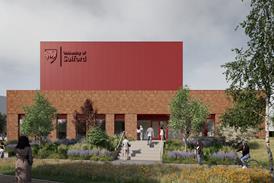Martyn Evans argues that meeting housing targets isn’t enough – it’s time to prioritise affordability, quality, and a shared vision for the future. He calls for a deeper focus on the type of homes we need, especially in areas where high house prices exclude key workers and lower-income families

How can it be December? It was only just summer. But here we are with another chance to reflect on the year just gone and what lies ahead for all of us in 2025.
In my business, 2024 was a year of optimism. When we sold our company, U+I, to Landsec in December 2021, we were in search of the support of a much larger company and the opportunity to deploy their expertise and capital into our large regeneration projects. Having secured planning consent on our large resi-led, mixed-use scheme at the O2 Centre in Finchley Road in 2023, this year has been all about the work needed to get it in front of an investment committee and the preparation to amend the consent to meet new building controls and improve its viability. We’ll be submitting our planning amendments shortly, with the intention of moving the project ahead at pace next year.
In South East London, we submitted a major planning application for the continued improvement of Lewisham Town Centre at the end of November, with a hope that we’ll get to a committee in the spring and move ahead after that as quickly as we can. Further north, in Manchester, we secured the agreement of our board to invest in the first construction phase of our 24-acre public-private partnership, mixed-use regeneration project at Mayfield – work will begin in the spring – and we completed the purchase of MediaCity in Salford.
So, it feels like we delivered on our mission significantly. But it seemed like immense hard work. I’m sure our architects and other professional teams will agree that we all had to pull something very special out of the bag to get where we’ve landed at the end of December. The economic outlook, the avalanche of new building regulations, and the change of government all added significant uncertainty and risk to our business. I’m not sure that’s going to change any time soon as we head into 2025.
Our new government has had a faltering start, but in the last couple of weeks, it’s been busy making announcements that impact our sector. Changes to the NPPF, a raft of policies to unlock housebuilding and smooth the planning process, and more to come on industrial strategy and public sector infrastructure investment will all shape how we are thinking about our businesses next year. In truth, unless it can wield power through its own investment, the impact that central government can bring to bear on the more acute problems in our sector is limited without everyone agreeing what the answers might be and moving ahead in concert to deliver what we need.
We are not a sector known particularly for innovation – so maybe we need to change that
I am not a volume housing expert, but if we just keep talking about the 1.5m homes target as a glib number without digging more deeply into a discussion about what kind of homes we need most urgently, that focus will slip. It seems to me that the most crucial issue to solve, especially in our towns and cities where land values are highest, is how we provide more affordable homes for families on low incomes, key workers, and those who make up the backbone of our economy.
Even with significant Homes England funding, as long as we rely on the private sector housebuilders to provide the means to deliver the affordable and social housing we need, we are entirely at the mercy of the market. In a time of uncertainty, however well-meaning housebuilders might be, they are primarily interested in looking after their shareholders’ money and will only build as many homes as suits them.
Unless we find cleverer ways of separating the delivery of affordable homes from the delivery of market homes, we will be stuck in the story that the economy writes for us. I hope that as 2025 unfolds, Matthew Pennycook, our very well-thought-of new housing minister with a hugely bright and engaged team, can lead the debate towards some practical answers that will deliver what we need.
But it isn’t all on him. We have to play our part too. If we are in any way engaged in solving the key housing problem, then we have to understand what it is that we can do to ensure a good solution. And that’s to deliver quality.
It’s no good meeting any kind of target if all we care about is the numbers. What good will it do if we manage to build 1.5 million low-quality homes? Of course, it’s not easy. When the economics make life in our sector hard, costs are cut, and quality suffers. But that’s where we have to put our best foot forward and work as hard and as tirelessly as we can to not let that happen. It’s entirely possible if we are smart.
We are not a sector known particularly for innovation – so maybe we need to change that. And that will only happen if we care enough, work out how to collaborate more effectively, challenge each other, be curious, learn, never settle for “that’ll do” and talk to each other more.
For architects, it means being brave and challenging your clients; for us in the development world, it means being prepared to listen, to set the tone for conversations that will deliver fresh ideas and take some risks. We will all be better off for it.
> Also read: Angela Rayner: a secretary of state on a mission – but is the industry convinced?
Postscript
Martyn Evans is creative director of U&I
















1 Readers' comment